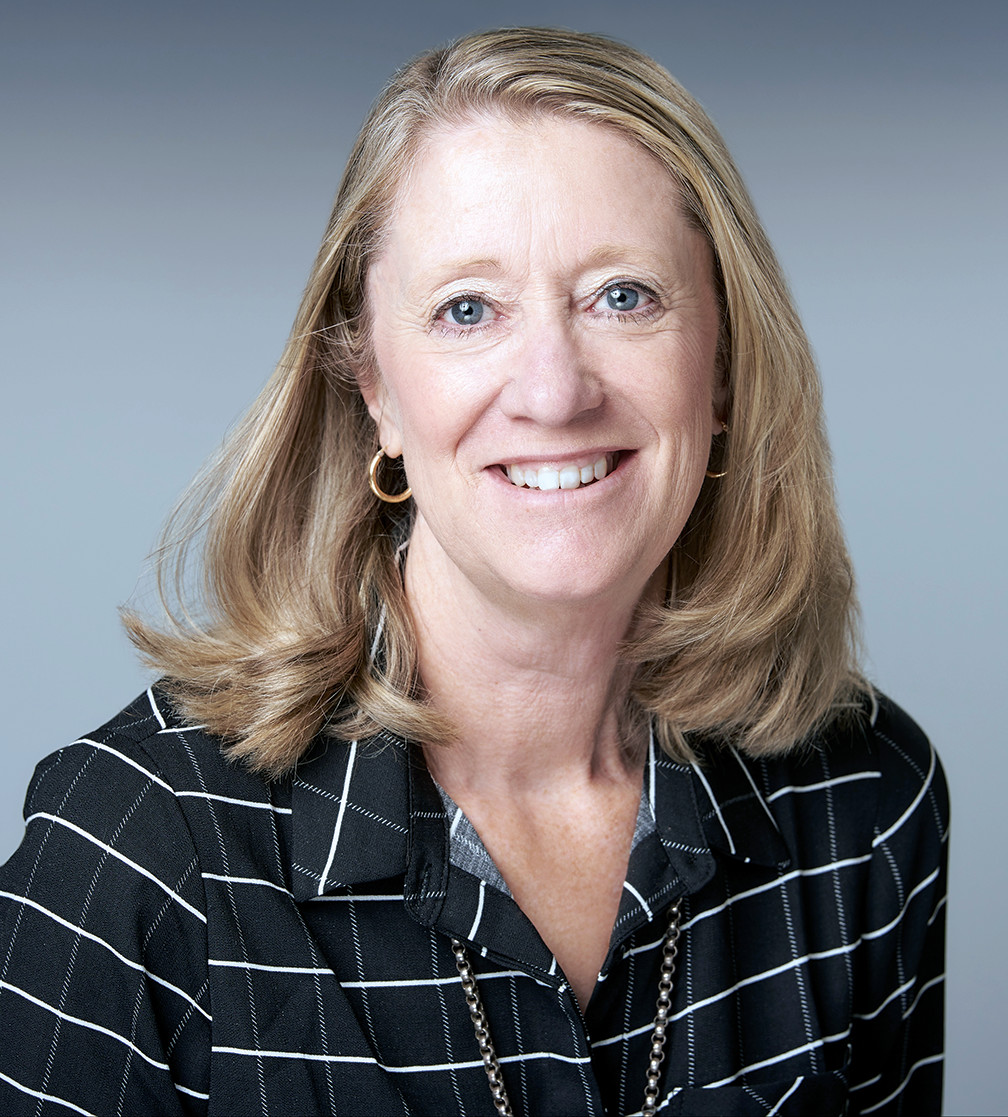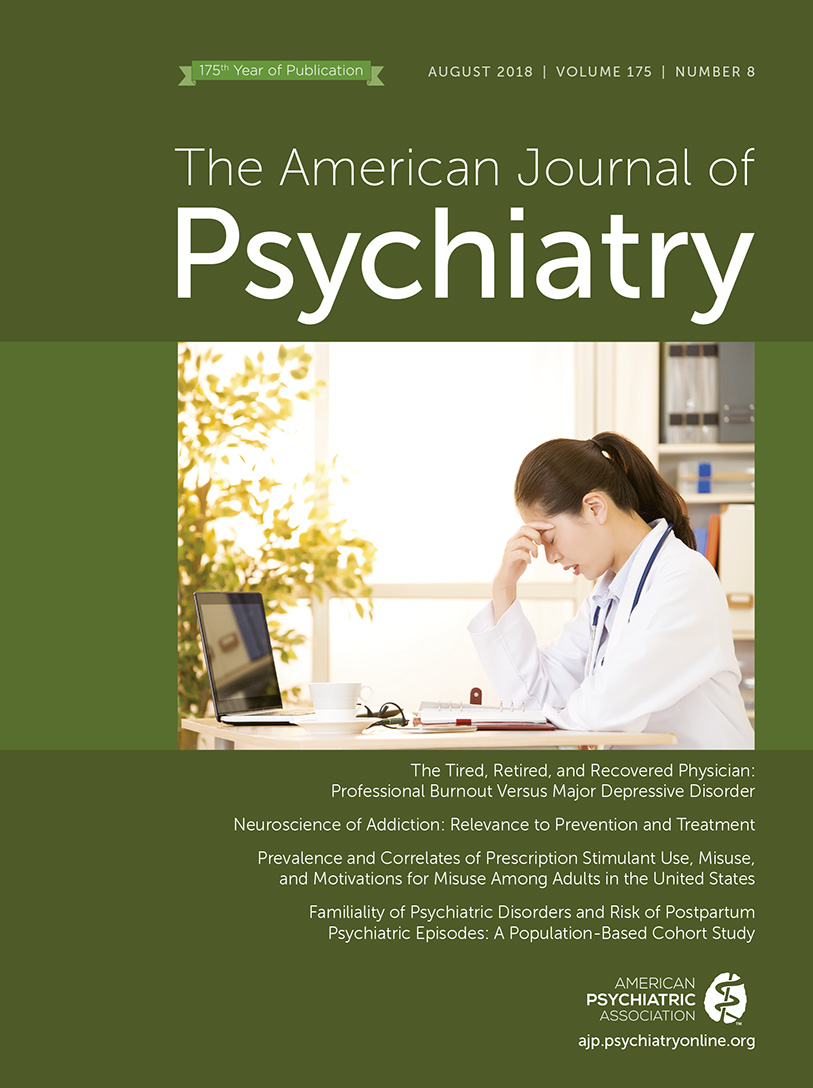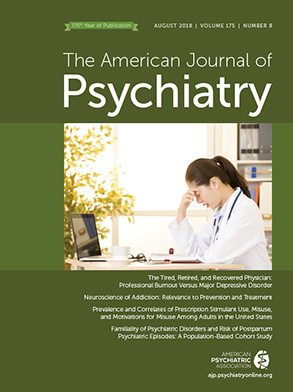I can hardly put into words the gratitude I have for all the people who have helped to make this year a meaningful year for myself as well as for our profession—the profession of psychiatry.
I would also like to thank my fellow APA Board members and the wonderful support they have provided me.
And I would like to thank our CEO and Medical Director, Saul Levin, for the wonderful support that I have received from him and the APA staff.
Thank you.
So, what is the state of psychiatry in America? What do we look like, and where are we headed?
Well, there are about 45,000–49,000 psychiatrists in the U.S., and about 75% are APA members. Total APA membership has grown significantly over the past 4 years and now stands at more than 37,800, making it the largest organization of psychiatrists in the world. I have confirmed that with Dr. Levin on several occasions, and he continues to assure me that China or India do not have organizations with more psychiatrists as members.
We believe that 87% of our members are in practice, and about 13% are retired or no longer practicing.
The average age of our membership is 53 and has decreased. This is good news and reflects the fact that APA’s largest growth in membership has been in younger psychiatrists, including medical students, residents, and early career. Our pipeline includes 5,036 resident and fellow members, and our psychiatry residency training programs slots are now filling. The American Association of Medical Colleges (AAMC) data show a 5.2% increase in the number of psychiatric PG-1 slots between the period of 2010 and 2015. This is positive news as we look into the future.
Forty-one percent of our total members are women, and the proportion of us is quickly growing. In fact, women are currently the majority for our early-career segments.
We have 104 training programs wherein 100% of their residents are members, and there are some states wherein all trainees in the entire state are APA members. Just recently, on March 10th, I personally handed out recognition of 100% status to every training program in Virginia.
We are strong, and we are growing.
Talk with a recruiter, and you may learn that we are one of the most in demand professions right now. It is good to feel wanted and to know we have options; however, sometimes this is a nuisance.
About 18 months ago, I left Johns Hopkins to accept a position as Chief Medical Officer at SAMSHA; among the first e-mails in my new government inbox were messages from recruiters. They had anticipated my e-mail address before I even arrived. So, I have to say that being in demand is good and assuring in some ways; in others, it represents a problem.
From a populations health or public health perspective, the great demand for psychiatrists—and really for all mental health professionals—is associated with great gaps or need for practitioners in the field.
From my perspective, far too many of us practice in isolated and cash-only private settings that are not really positioned to increase access to those in underserved communities.
Far too few of us practice in the cool, tough-challenge places, like my friend Curtis Adams in the Sandtown neighborhood in Baltimore or Tony Carino, who has spent his career on the streets of New York.
Throughout my year, I have appointed community and public-sector psychiatrists to everything I could in hopes that this would increase exposure and experience with our part of psychiatry: community psychiatry. In doing this, I hope to have more of our APA members know that community psychiatry can be a great career choice, either as full-time or part-time work.
All of us have mentors, and I have been fortunate enough to have had multiple mentors that I had the opportunity to meet and work with through the APA. I think of my mentors as a kind of rare book collection. When I get stuck on an issue or problem, I pull one of them off the shelf and imagine a conversation with that person. Many of those rare books, in fact, are sitting behind me on this stage.
One of my favorite community systems psychiatrists is Steve Sharfstein, who among many things, taught me that the average psychiatrist has 2.2 jobs. Now, I do not know what the exact reference is for that, and it may very well be fake news by today’s definition, but I do know that when I have mentioned that statistic at several of the district branch events I have attended over the year, often, members who may be struggling with their own balance of well-being and burnout want to talk about their experience with juggling multiple jobs and life. So, don’t overextend yourself, but I am here to tell you that working in community psychiatry settings can be fun, enriching, and rewarding.
We need good psychiatrists to work as systems designers and leaders in these settings, and we don’t want to abdicate this important function to other providers.
Many of you know that I have formed several work groups over the year that have focused on activities that, in a way, were designed to address aspects of the health and future positioning of our profession. The first work group is on well-being and burnout. I want to publicly acknowledge Saul Levin for his support in choosing this initiative. This has been a very productive work group that has been chaired by Dr. Rick Summers. Membership on this work group includes persons from practice and academic psychiatry, training faculty, resident and fellow members, early-career and, of course, several community psychiatrists. In fact, one of our prominent task force members is Dr. Bernstein, who is a teacher and also a nationally recognized communicator.
I would also like to thank the APA Division of Education for their wonderful support. In a short period of time, this group has created multiple resources that are all designed to facilitate well-being. The next time you have an unexpected no-show, visit their website at
psychiatry.org/wellbeing, and browse through some of the materials that are posted there.
Take the Oldenburg Burnout scale anonymously, and see where you fall in terms of burnout. The first reveal of this tool was at the Fall 2017 Assembly, where we had about 400 members take the survey. To date, we have had nearly 1,500 participants take the survey.
And what have we learned about our members? We have learned that well over half of us show signs of burnout as measured by this tool. We have learned that there is a correlation between burnout and gender, with female physicians being at higher risk for burnout compared with their male counterparts. We have also found that burnout really affects our younger members, many of whom are just starting their careers. We’ve found that a lack of control over one’s work schedule correlates with higher rates of burnout.
I hope you have enjoyed the personal accounts of well-being and burnout in Psychiatric News over the year. I am grateful to Jeff Borenstein, our Editor of Psych News, for publishing that series.
Another related series of member focus in Psychiatric News was a series of aspiration stories. These are stories of the roots of thinking of becoming a psychiatrist. The series was intended to inspire all of us to think about the big picture and social value of our profession. We all aspired to something when we chose to pursue psychiatry: advance neuroscience, help people, ease pain, heal families, and improve communities. Several of our members wrote compelling pieces for that series, and I hope that they may have had positive impact on our members.
The second work group I put together has been on innovation. Here, the notion was to improve and equip our profession’s ability to adapt to changes so that we are better able to partner with innovation and not be threatened by it.
It all started one night when we realized that our family dog had stopped eating for the whole day. We needed help, and on this particular day, no one that could drive was in a good position to take him to our vet the next day. While sorting out who could cancel what the next day, I did what many modern families do and consulted Dr. Google.
One of the listings that came up advertised on-demand veterinary medicine consultation with a licensed veterinarian for a fee.
“Hmmm,” I thought, “Could that be legitimate?”
I decided to give it a try. Put in the symptoms and a bit about the dog’s history and then came the page asking for credit card information. Skeptical still—but also knowing how hard it was going to be to cancel work the next day—I put in the information and waited. Within a few minutes, I got a response with another question or two, responded back and then received a list of differential diagnoses for the common causes of dogs of his breed with these symptoms and a list of recommendations. I followed the recommendations, and by the next morning he was eating.
Since then I have learned that there are multiple similar primary care sites for people that work this way.
Certain states allow simple medical conditions, such as urinary tract infections, to be managed completely virtually. Lemonade Health is one example of many. I encourage you to look it up. Lemonade Health. See if you could receive real-time treatment for certain conditions in your state.
So, what are the ramifications of this sort of thing for psychiatry?
Most of us are familiar with telepsychiatry, which usually provides diagnosis and treatment through scheduled appointments. But, could one do psychotherapy on demand like the veterinarian scenario? Do you need a psychiatrist or therapist to be there on demand? Could asynchronous telemedicine be effective? What about apps for well-being and outreach?
There are already very established practices that provide on-demand emergency room telemedicine with psychiatry.
A part of the future of our profession depends on our ability to work with innovation so that it augments what we do and is built upon evidence regarding outcomes for patients and not profit margins.
I am grateful to John Santopietro and John Torous who have led that work group, which has a very diverse and innovative combination of members—again from practice, Silicon Valley, academia, and with a few community psychiatrists sprinkled in. This group is well supported by our very skilled APA Policy Team.
The third work group is one that will do some strategic planning for our fall Mental Health Services Conference.
We hope that as more of our members become interested in working in public and community psychiatry, and as those jobs become better working conditions for psychiatrists, that the fall meeting will be more widely attended.
Thank you to Dr. Paula Panzer, a leading public psychiatrist here in Manhattan, who will lend us her leadership in that work group.
Another work group that I have appointed was under the very adept leadership of Dr. John Oldham. John is another one of those wonderful rare mentor books on my virtual shelf who has a history in public mental health and who has sufficient gravitas to lead this group. This work group made recommendations to the Board regarding an overall strategy for the APA in addressing the safe prescribing of medication and psychiatric medication and scope of practice by professions that do not have extensive biologically based medical training.
An emerging work group that will be carried forward under Dr. Stewart’s term will look at the pros and cons of the formation of a council or committee that specifically focuses on women’s health issues.
Those are my main work groups that I wanted to report out to you today.
I hope that you will enjoy this meeting. Linda Worley and her group, which as you might have guessed includes several community psychiatrists, have put together a really great meeting. We had a record number of submissions, more than 2,000. There are 550 sessions, and 23 directly relate to physician well-being.
If you brought along your Alexa, or your Alexa app, you may be interested to know that there are many questions you can ask it about our meeting. The APA Department of Education staff spent a weekend “playing” with Alexa specifications to create a program that would enable Alexa to answer many questions about the meeting program and tracks.
Other activity at APA over the last year that impacts our profession has included working with the American Board of Psychiatry and Neurology to improve the certification process.
I’m excited to announce that we have also selected a new Editor for our premier journal, AJP, Dr. Ned Kalin.
We have also extended Dr. Levin’s contract as CEO and Medical Director to continue another 5 years. We thank him for leading his amazing team (I thank them all as well) and look forward to another 5 years of APA being the “go to organization on mental health.”
And a very big deal for us, and more importantly our staff, is the move to 800 Maine Avenue, Southwest, in DC. We officially opened our new building on March 16, 2018, and we want every one of our members to know that you are invited to stop by the next time you are in DC.
It is an uplifting, light and inspiring place, with a view of the Capitol dome on one side and the Potomac River on the other. There is a museum-level archive with a library and other treasures relevant to the 174-year history of our great organization. And there is a special room on the 9th floor for any member to come, sit a spell, catch up on e-mails with our WiFi, and take in our view.
Finally, I want to close with a few stanzas of a bad poem that I wrote for our APA staff on the occasion of the first all-staff meeting in the new building this year:
The new modern offices
were all glass and light
You could see right across the street
to hotel guests at night.
Now back to the story
‘bout the group called APA
Their members are shrinks
And their staff are really great
This move is not the end
It’s really a beginning.
We will work hard every day
Until our cause is winning.
Our cause is healing those who suffer
With mental illness and addiction
Our cause is stamping out the stigma
associated with this affliction.
Sure, it’s true that we provide
better tools for our profession
And it’s true that most of all
Assisting those with mental illness is our obsession.
So to all our great staff and members today,
I give you applause
For sharing your career and talent
to join in our cause.
Psychiatry in America is alive and well.
Thank you.


